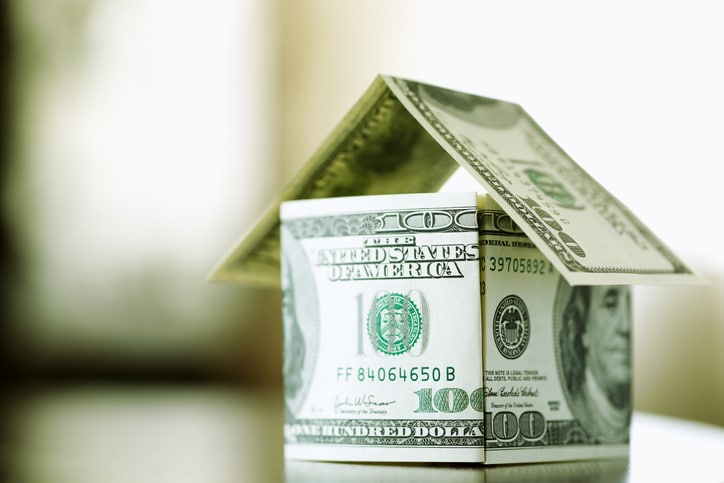It was a May that was worth forgetting, according to the latest Realtor.com Housing Report that recorded home price growth of only 0.9% year-over-year, the slowest rate since the company began recording this data in 2016.
“April and May are historically popular months to buy, and typically by this time in the year we’ve exceeded the prior year’s peak home price,” observed Danielle Hale, chief economist for Realtor.com. “Weakening home price growth for the past 12 months is increasing the odds that we may not see a new home price peak this year, for the first time in the history of our listing data, which dates back to mid-2016, and this is likely welcome news to home shoppers.”
The median list price grew to $441,000 in May, up from $430,000 in April but down by 1.7% from June 2022’s record high of $449,000. Higher mortgage rates and home prices compared to May 2022 increased the monthly cost of financing 80% of the typical home by roughly $296 compared to a year ago.
Among the 50 largest U.S. metros, 15 markets saw their median list price decline, most notably the Texas markets Austin (-7.3% year over year), Houston (-5.9%), and San Antonio (-5.8%). The number of active listings in May was up 21.5% year-over-year but the inventory growth rate continued to slow for the third straight month.
“Despite stalling price growth, home listing prices are up slightly compared to last May, and with rates more than a percentage point higher than a year ago, buyers continue to face affordability headwinds,” Hale said. “The good news for sellers is that buyers are still out there, and this month’s slower growth in the active inventory of homes for sale indicates that shoppers are in the market and actively searching for homes that fit their needs and budget.”













I have read that the Feds raising the prime lending rate should not have caused a fast increase in home loan interest rates, but lenders responded very quickly by raising their interest rates almost immediately with each cycle of prime lending rate increases. Why did the Feds allow that to happen? This is why I support state owned banks (to control loan interest rates and to create competition (for lower interest rates).
The Feds raising the prime rate had the effect of giving lenders a (lame) excuse to raise home loan interest rates almost instantly, even though the prime rate is not supposed to cause that to happen (at least not rapidly).
The result has been that Homeowners, many of whom had waited since the 2008 recession and were just about to enjoy large gains in home equity, then saw the Feds raise interest rates in rapid succession, and homeowners lost a large amount of their built-up equity. Many owners decided NOT to sell or could not take out refinancing or HELOC loans, or sold at lower prices (after May 2022), all of which hurt those homeowners.
But, despite stalled or falling home prices since May 2022, buyers also suffered with higher monthly mortgage payments (due to higher interest rates).
So the Feds (then lenders) raising interest rates hurt both sellers and buyers. How is that a good thing? (It’s not). Despite the Feds saying they wanted to slow inflation, I do not see prices of daily goods or services stalled or falling. The fact is that most people are not buying or selling homes every year. But people DO eat food, drink water, consume energy, and need daily or monthly consumer supplies to survive. I have not seen the Feds move to hold down prices on those daily and recurring consumer products.
Why did the Feds refuse to curb inflation on daily goods and services?
Israel had insanely high inflation several decades ago, and they solved it (without a recession) by holding down costs across a broad spectrum of consumer items, while capping wage increases to keep costs down for employers. It worked really well.
In the U.S., the Feds have refused to take those steps (like pushing energy and food costs down). Most people do NOT feel like inflation has been abated; it feels worse, in part because homeowners have seen their equity diminish, equity that they could have tapped (with lower interest rates or a home sale) to carry the expenses of their daily lives. Buyers have only suffered higher mortgage bills due to all this smoke and mirrors game that the Feds have played.
The winners (as usual) are the billionaires and billionaire-valued investment groups who gleefully support higher mortgage rates and then swoop in to buy homes (for cash) once those home values have dropped.
We have seen this scenario before. Follow the money, and you will see that most Americans have been harmed (for decades running) by Fed policies that enrich the already very, very rich.
The culture wars are a ruse to divert the attention of Americans away from the root problem that is harming most people (including lower millionaires who also feel fear of declining values because a few million does not buy the safety net it used to buy). The fraction of 1% (the Billionaires) are pushing Federal (and state) policies that enrich them, and they are using culture war propaganda to mask the power brokers hiding behind the curtain (aka Wizard of Oz), but in this case, there is no redeemable but misguided wizard who will realize his greed and make amends.
Citizens need to wake up and demand a new policy structure that helps all Americans, particularly the lower, middle, and lower-end millionaire classes.
State owned banks would be a great start (like North Dakota has done).
The banking industry and greedy puppet masters have fought against other states creating State owned banks because it would create FAIR competition and lower interest rates across all banks due to more competition from the state owned banks. In other words, it would work well for all Americans, and we know that such a concept runs counter to what Billionaires want.
Thank you for the refreshing rebuttal! I truly think we are out numbered though,howerer, I fully agree with your statements.